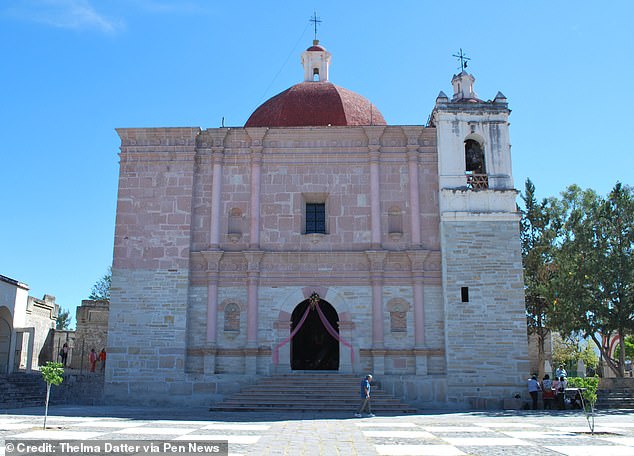Tunnels that the ancient Zapotec civilization believed were the “entrance to the underworld” have been found penetrating deep into the earth beneath a centuries-old church.
Mitla, meaning place of the dead, was a city in southern Mexico known for its association with Pitao Bezelao, the Zapotec god of death.
But the Spanish arrived in the 16th century and devastated the city, building a church on the ruins of its most important temple.
A priest later wrote that “the back door to hell” lay beneath the city: huge caverns believed to be the entrance to the Zapotec underworld.
But they were boarded up, he said, and subsequent excavations failed to find anything matching the scale of their description — until now.
Using non-invasive techniques, archaeologists recently revealed a series of chambers and tunnels beneath the city.
Five different sets of ruins were surveyed: the church group, the stream group, the adobe group, the south group, and the column group.
Marco Vigato, founder of Project ARX, who is leading the search, said: “Some of the tunnels and chambers extend to a considerable depth, more than 15 metres.
Ancient tunnels believed to be the “entrance to the underworld” have been found penetrating deep into the earth beneath a centuries-old church.
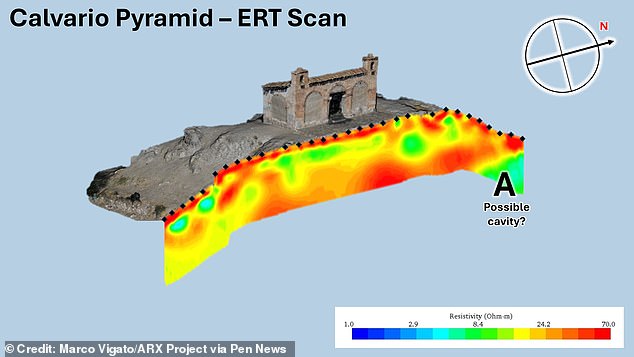
Using non-invasive techniques, archaeologists recently revealed a series of chambers and tunnels beneath the city.
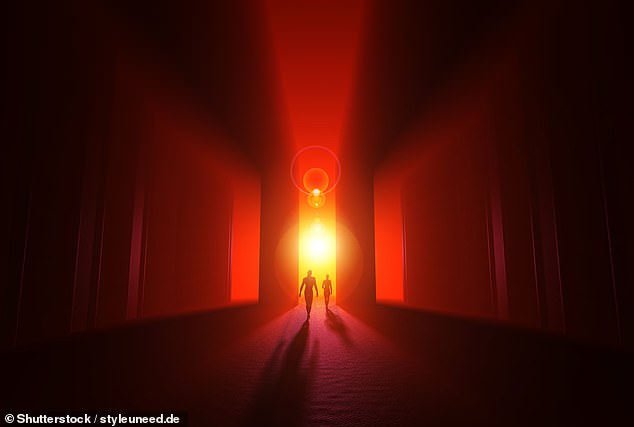
Archaeologists have discovered what they call the “back door to hell” in tunnels beneath an ancient church (file image)
«In the southern group, the depth is up to 30 meters: this is the furthest the instruments can penetrate.
‘A chamber beneath the Church of St. Paul the Apostle measures approximately 15 meters long by 10 meters wide.
‘It is possible that the tunnels, especially those beneath the church group, extend further to the north, east and south.
“They are possibly connected to other geophysical anomalies identified in the other groups.”
If these are the tunnels of legend, it is possible that the Zapotec kings may be found inside.
Francisco de Burgoa, the aforementioned priest, paints a picture of the royal burial chamber in his 1674 text, Geographic Description.
It says that kings are buried “richly dressed in their best attire,” with “feathers, jewels, necklaces of gold and precious stones.”
Their bodies, meanwhile, hold “a shield in the left hand and a javelin in the right, just as they were used in war.”
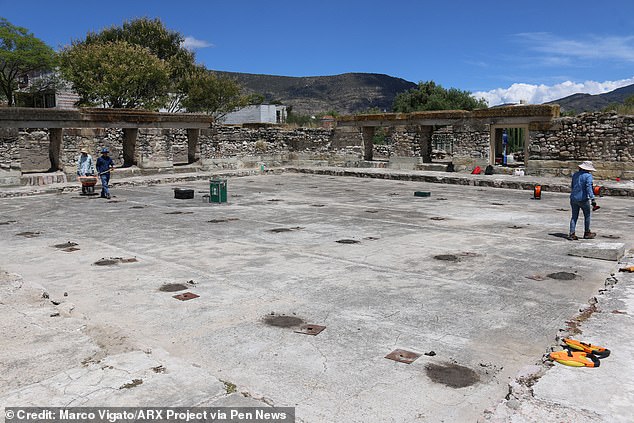
Five different sets of ruins were explored: the church group, the stream group, the adobe group, the south group, and the column group.
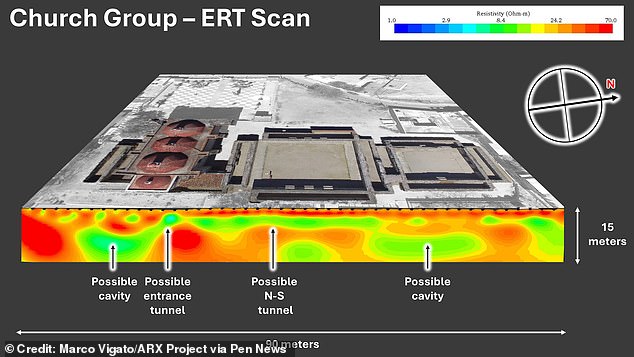
The underground tunnels were revealed using a combination of ground-penetrating radar, electrical resistivity tomography and seismic noise tomography.
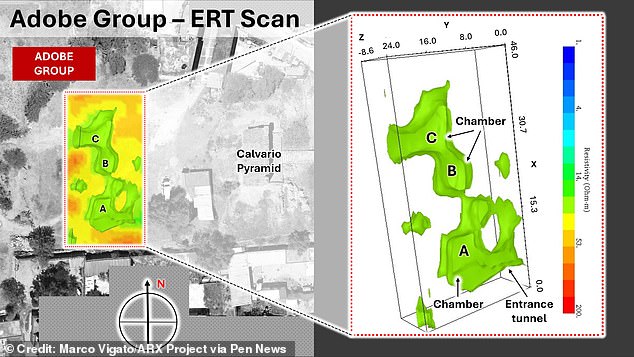
Instead of electricity, seismic noise tomography measures the speed at which seismic waves pass through the ground
Two other caverns he describes contain a chapel and a burial chamber for the Zapotec high priests, respectively.
The last chamber, he says, leads to “a dark and frightful room” where “they threw the bodies of the victims of the great lords and chiefs who had fallen in the battle.”
Mr Vigato said: ‘The Zapotecs believed that the caves and underground labyrinth beneath Mitla were an entrance to the underworld, or Lyobaa.
‘For this reason, Mitla was the center of the cult of Pitao Bezelao, the Zapotec god of death and the underworld, and was for centuries the cemetery of Zapotec kings and high priests.’
It is no coincidence that there was a void beneath the church altar.
Vigato said: ‘The church was deliberately built on top of the most important Zapotec temple in Mitla.
‘It was a way to reconvert a pre-existing religious place and symbolize the triumph of the new faith.
“A significant part of the ruins were incorporated into the foundations of the church, which was built with stones torn from ancient buildings.”
The underground tunnels were revealed using a combination of ground-penetrating radar, electrical resistivity tomography and seismic noise tomography.
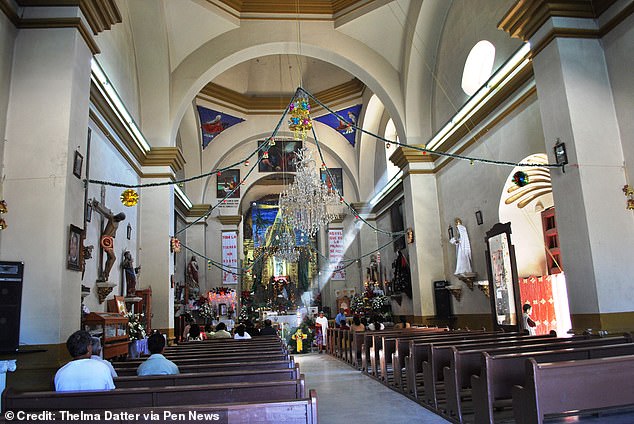
This photo shows the interior of the Church of San Pablo Apóstol in Mitla.
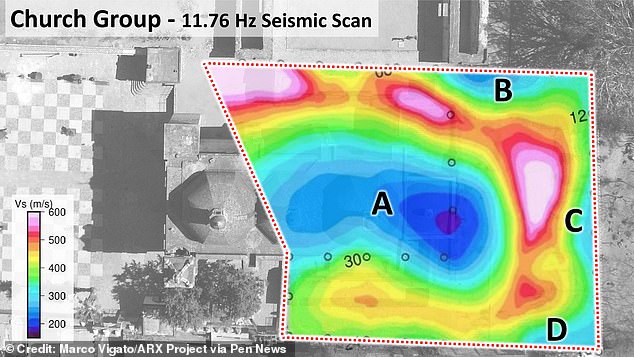
Researchers now hope to determine the nature of the cavities identified beneath the site and whether they contain any artifacts of archaeological significance.
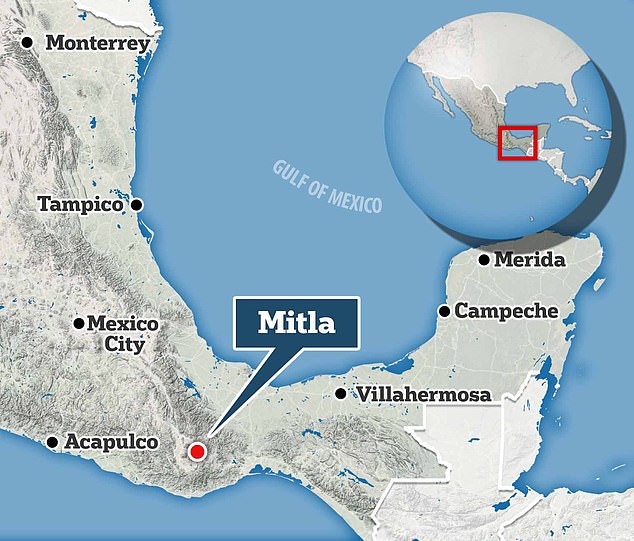
The tunnels were discovered beneath a church in the ancient city of Mitla
The first method uses radar waves to model the subsurface, while the second detects buried structures by measuring the flow of electricity through the earth.
Instead of electricity, the final method measures the speed at which seismic waves move through the ground.
The age of the tunnels has not yet been established.
Vigato said: ‘The natural caves in the Mitla area have been occupied and partially modified by humans for thousands of years.
«The oldest evidence of crop domestication in the Mitla area dates back almost 10,000 years.
‘There is no indication at the moment about the possible age of the tunnels beneath the church or the other groups of structures at Mitla.
“They may have been created by the Zapotecs, or they could be much older.”
He added: ‘The results of the geophysical scans will have to be confirmed with archaeological methods.
“This could determine the nature of the cavities identified beneath the site and whether they contain any artifacts of archaeological importance.”
You can learn more about the discoveries in Mitla at www.arxproject.org.

